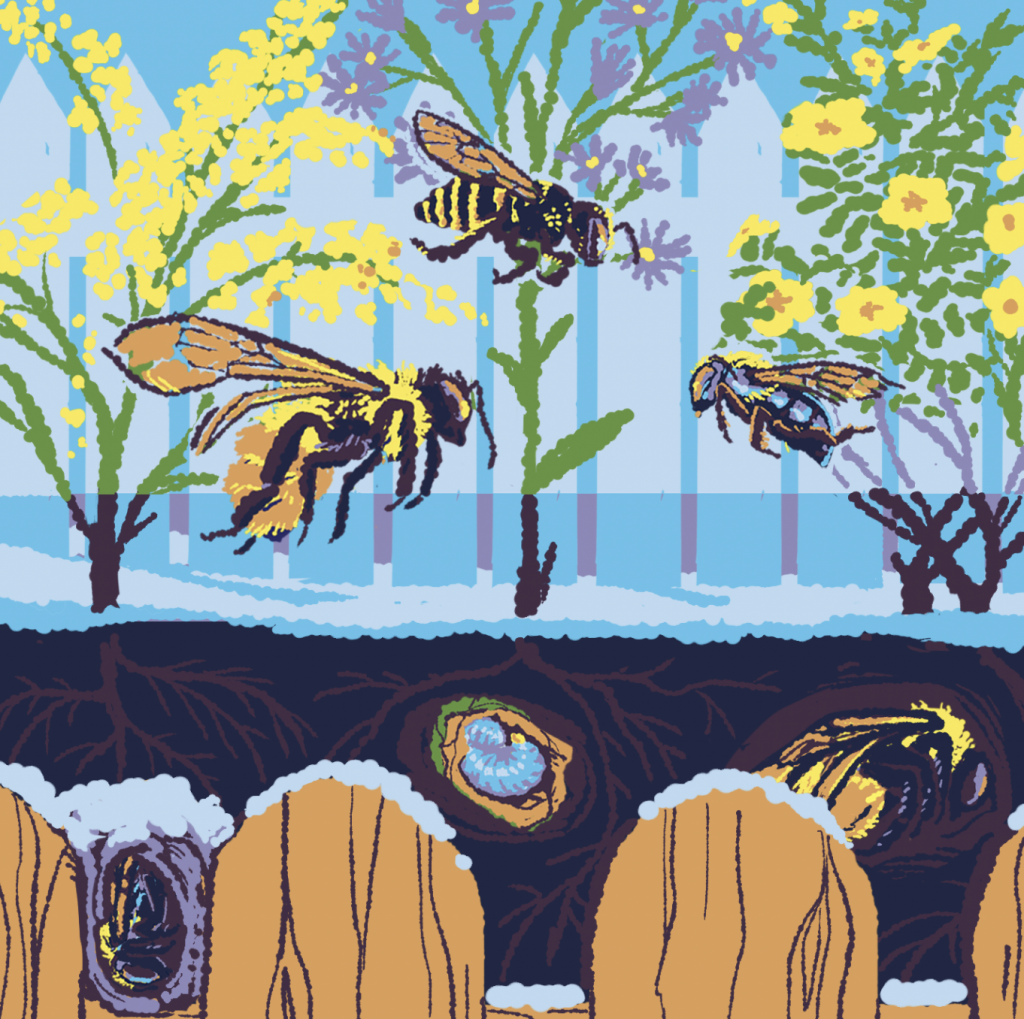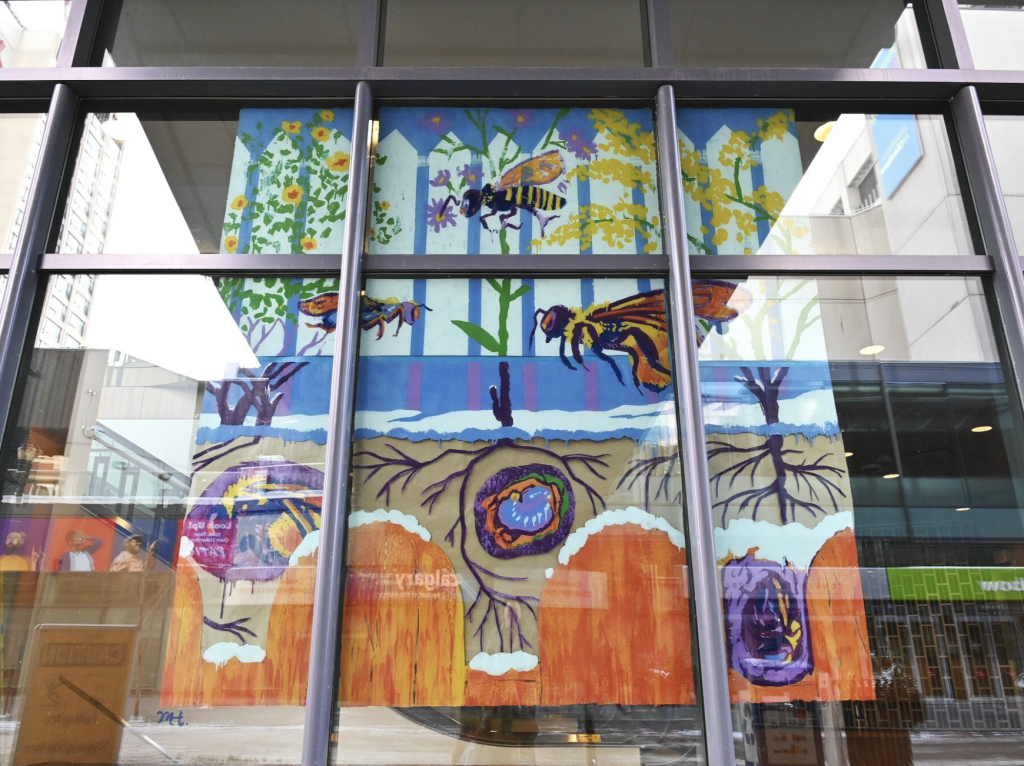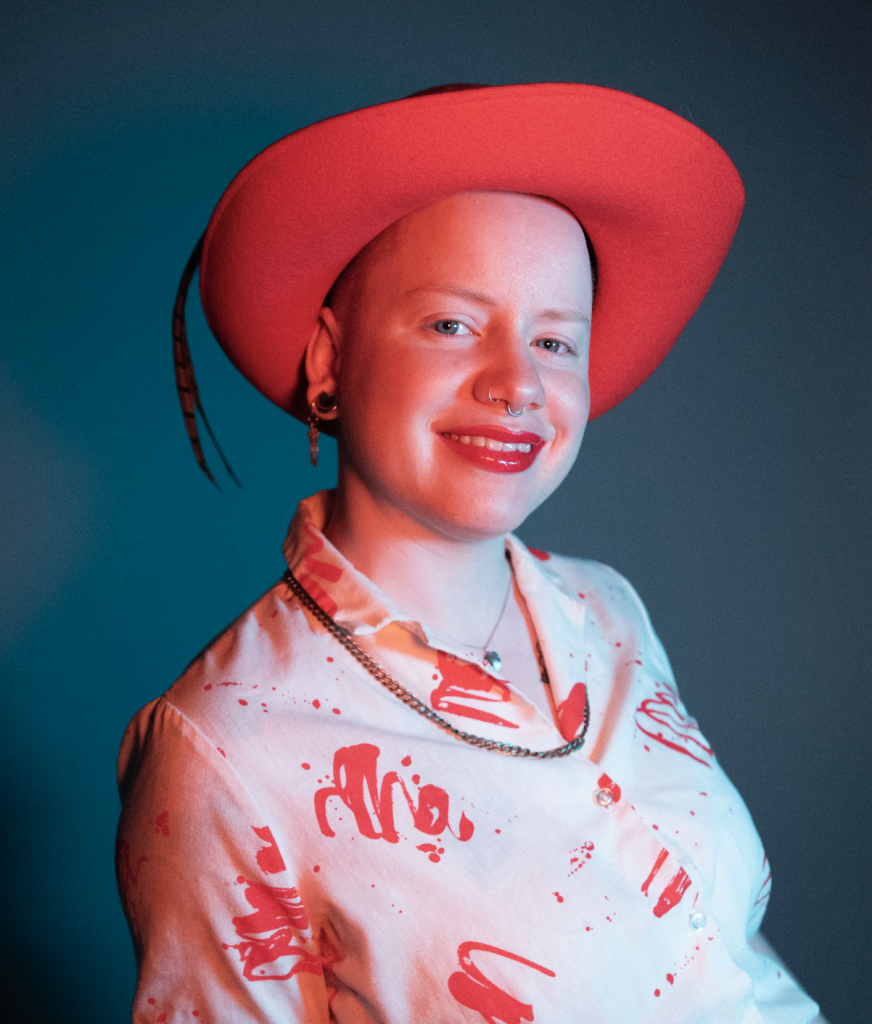While we all know what a bee is, do we know what kind of bees reside in our communities What flowers are they attracted to? Where do they go in the winter? The more we learn through observation, the more we can assist the bee population through sharing knowledge, planting flowers, and creating environments for local species to flourish.
In February 2021, Calgary artist Mike Hooves met with researchers at the University of Calgary to design an art installation for the Chinook Blast event to promote better understanding bee biodiversity in the city. The artwork features three different genera of native bees, the native flowers the bees pollinate, and where the bees can be found during winter.


Mike Hooves
Mike Hooves is a multi-disciplinary prairie artist working in illustration, animation, and film in Calgary, Alberta. Using graphic shape, saturated colour, and gesture Mike creates playful and engaging illustrations. Website

Research Contact: Mindi Summers
Researchers and undergraduate students in Zoology 435 – Entomology at the University of Calgary have been working to document the insect diversity in the City of Calgary, with a focus on native bees. With over 330 species of bees found in Alberta, we are exploring what bees occupy our city and the native plants that they pollinate to help inform restoration and conservation efforts – with a goal of creating biodiverse neighbourhoods and communities. The research team consists of Mindi Summers, Arminty Clarke, Lincoln Best, Sam Robinson, Michael Gavin, & Students in Zoology 435.
You can learn more about Chinook Blast at their website. This project was also featured in UToday.
